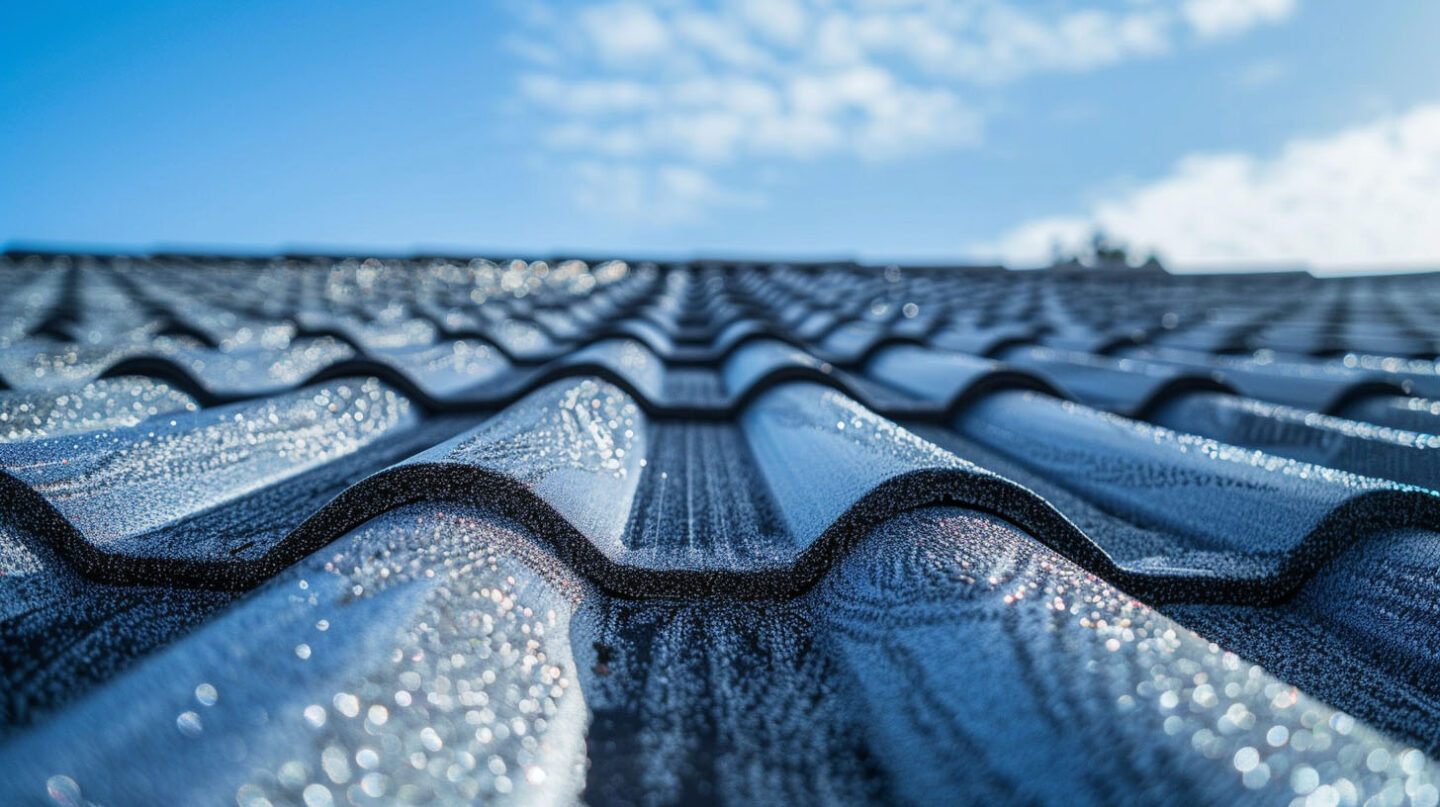Getting a new roof is a major investment in your home’s safety and value. So, is it normal for a new roof to shed granules right after installation? Seeing small, sand-like particles in your gutters can be alarming, but it’s often a normal part of the process for new asphalt shingles. At The Shingle Master, we believe in empowering homeowners with knowledge in Clayton, NC. This guide will help you understand the difference between normal shedding after a roof replacement and signs of a potential defect, ensuring you feel confident about your home’s new protective layer.
Understanding Roof Granules and Their Role
Roof granules play a crucial role in safeguarding the integrity and performance of roofing materials, particularly new asphalt shingles. These small particles not only provide UV protection but also enhance fire resistance, contributing significantly to the roof’s lifespan. Granules form a protective coating on shingles, shielding them from harsh weather conditions like strong winds and heavy rain. The absence of sufficient protective granules can lead to premature granule loss, exposing the underlying materials to potential structural damage and costly repairs.
What Are Roof Granules Made Of?
Roofing granules are essentially small particles of crushed stone or minerals that are specifically chosen for their durability. During manufacturing, these granules are pressed onto the surface of the asphalt-coated shingle, which typically has a core made of a fiberglass mat for strength and stability.
The process involves embedding a thick layer of these granules into hot asphalt. This creates a strong bond that is designed to last for decades. The quality of the adhesion process is a key factor in how well the shingles retain their granules over time.
Why Are Granules Important for Shingle Performance?
Roof granules serve as a protective barrier, guarding shingles against UV rays and weather elements. They also enhance traction, improving the roof’s overall durability and lifespan. Proper granule presence ensures optimal performance, preventing damage and prolonging the roof’s functionality.

Granule Shedding on New Roofs: What’s Typical?
This initial shedding is caused by excess, loose granules that did not fully embed into the shingles during manufacturing. They are easily dislodged during packing, shipping, and installation, especially from the necessary foot traffic of your roofing crew. Let’s explore what to expect in terms of quantity and duration.
Expected Granule Loss After a New Installation
Minor granule loss is commonly experienced following a new roof installation, particularly with asphalt shingles. This initial shedding, often a result of the manufacturing process or installation techniques, helps to establish the protective layer necessary for optimal performance. Typically, homeowners can expect a small pile of granules near the roof’s edge or in gutters. However, if significant granule loss continues beyond the initial weeks, it may indicate improper installation or defects, warranting a thorough roof inspection by a trusted roofing professional.
How Long Does Initial Shedding Usually Last?
Initial granule shedding typically lasts between a few weeks to several months after installation. During this period, it’s normal for shingles to lose some granules as they settle, but excessive shedding may signal potential issues that require further inspection.
Normal vs. Abnormal Granule Loss: Key Differences
So, how can you tell if the granule shedding on your new roof is a defect or just normal wearing? The key difference lies in the quantity, timing, and effect on the shingles. Normal granule shedding is minor, happens right after installation, and doesn’t leave visible damage.
On the other hand, excessive granule loss is a red flag. This involves large amounts of granules shedding continuously and can lead to visible bald spots on your shingles. Understanding these differences helps you protect your investment and address potential issues before they become serious. Next, we’ll outline the specific signs for each.

Identifying Signs of Normal Granule Shedding
Recognizing signs of normal granule shedding is essential for understanding the health of your new asphalt roof. Minor granule loss shortly after installation is expected, especially during the first few months as protective granules settle. Look for small particles around your gutters or at the base of downspouts, rather than large piles indicating excessive loss. A few bald spots may emerge but shouldn’t affect the roof’s performance. Observing this typical behavior can provide peace of mind about your roofing materials’ longevity.
Red Flags That Indicate a Potential Defect
Abnormal granule shedding can be a cause for concern in new asphalt roofs. Warning signs include bald spots revealing the fiberglass mat beneath, excessive granule loss resulting from improper installation, or a visible pile of granules accumulating around the home. Structural damage from harsh weather, such as heavy rain or strong winds, can also exacerbate the situation. If these issues arise soon after installation, consulting a trusted roofing professional for an inspection is advisable to mitigate further damage or costly repairs.
Get in Touch
Understanding the nuances of granule shedding is essential for homeowners considering a new roof installation. Regular granule loss corresponds to the typical aging process of roofing materials like asphalt shingles. However, vigilance is important; distinguishing between normal and excessive granule loss can prevent further damage and costly repairs. Engaging a trusted roofing professional, such as our team of GAF Master Elite Contractors and Haag Certified Inspectors, for regular inspections ensures peace of mind while safeguarding the roof’s lifespan. With our BBB A+ and recognition as Raleigh’s Best Roofing Contractor, addressing early signs of wear can mitigate risks associated with premature granule loss, enhancing the overall durability of your investment.

Frequently Asked Questions
Is it normal for a new roof to shed granules?
Yes, it is typical for a new roof to shed some granules shortly after installation. This initial shedding occurs as the shingles settle and may last several weeks. However, excessive loss beyond this period could indicate potential issues that warrant further investigation.
How much granule loss is too much?
Excessive granule loss typically exceeds 5-10% within the first year after installation. If you notice significant shedding beyond this range, it may indicate a potential defect or installation issue that requires further investigation to protect your roof’s longevity and performance.
What does granular loss on a roof look like?
Shingle granule loss appears as a lot of granules in your gutters, discolored patches on your roof, or visible bare spots where the shingle surface looks smooth and black. These are warning signs that your roof’s protective layer is compromised, increasing the risk of damage and potential roof leaks.
Read our blog: Wind Nailing Patterns: Coastal vs Inland Zones


